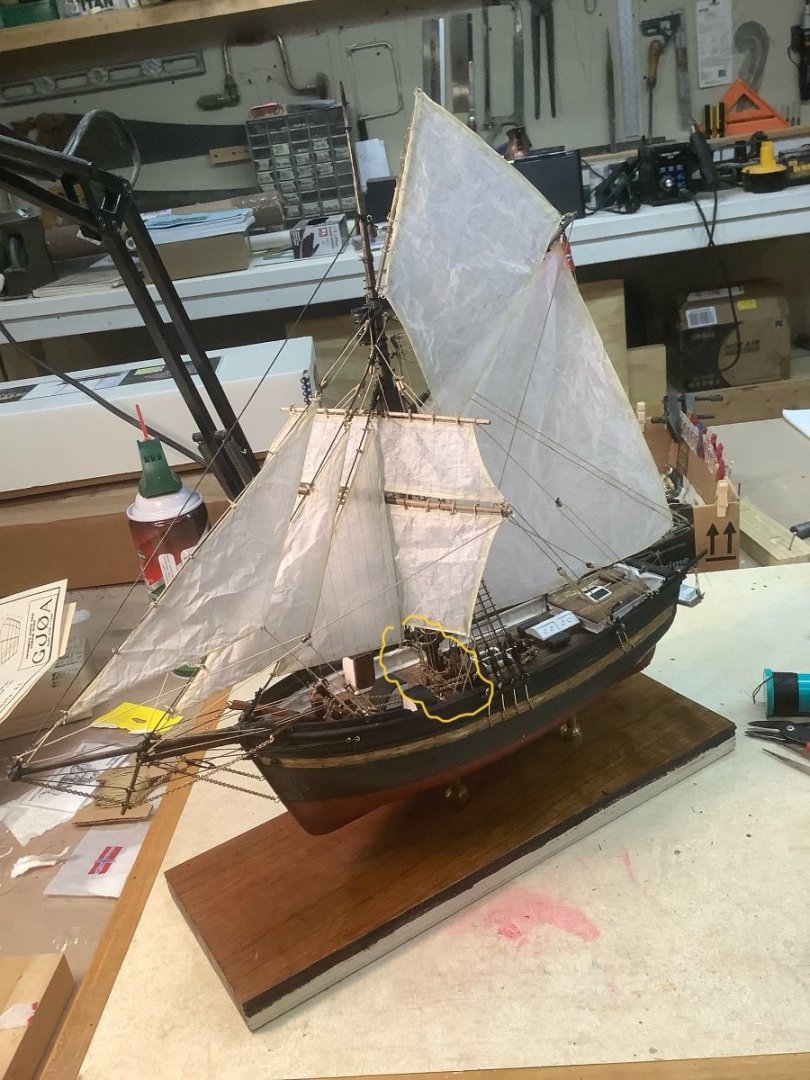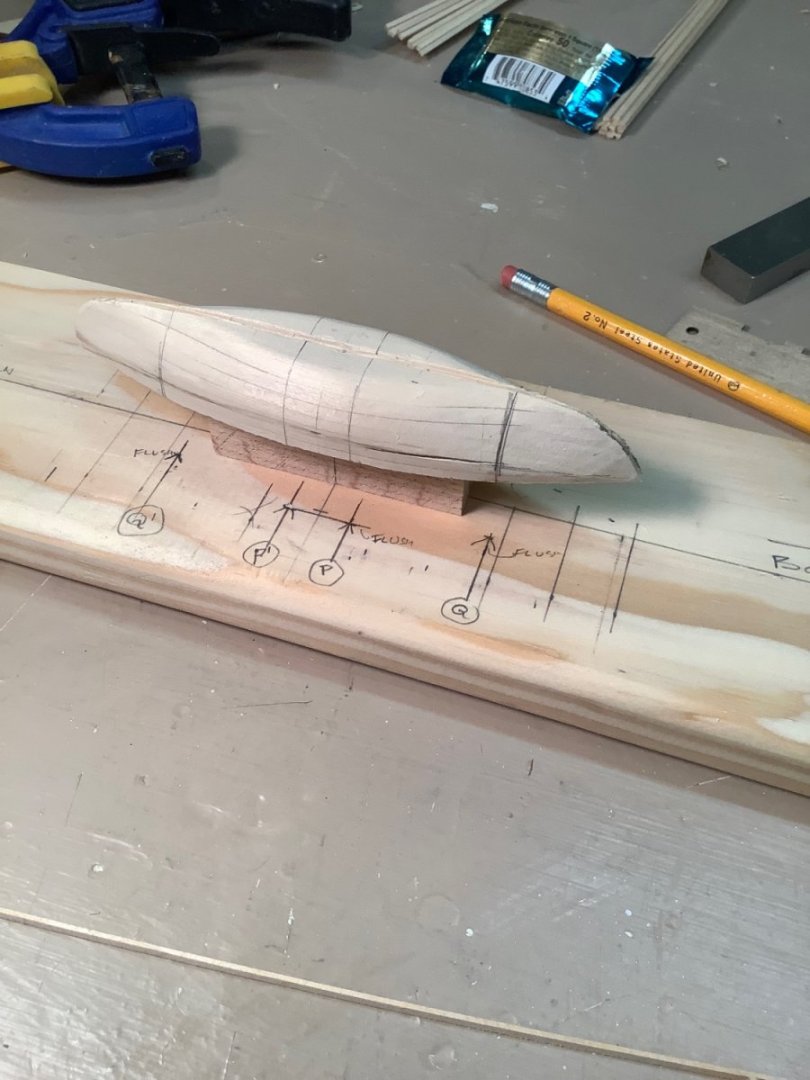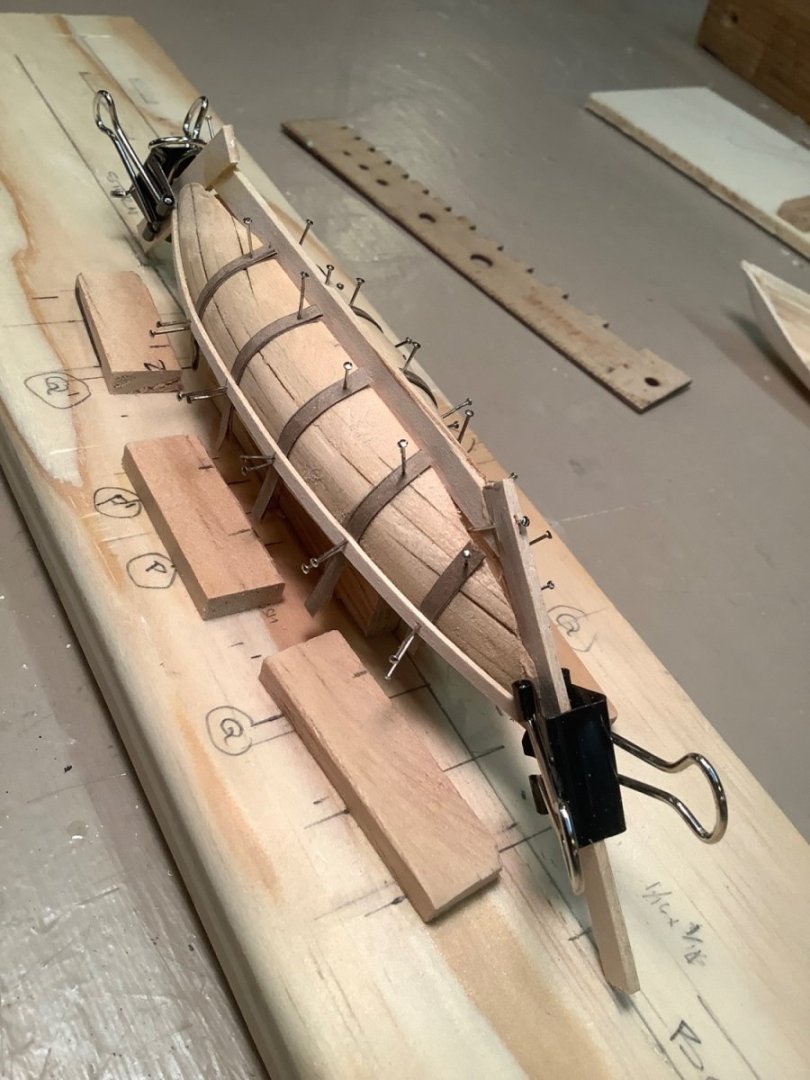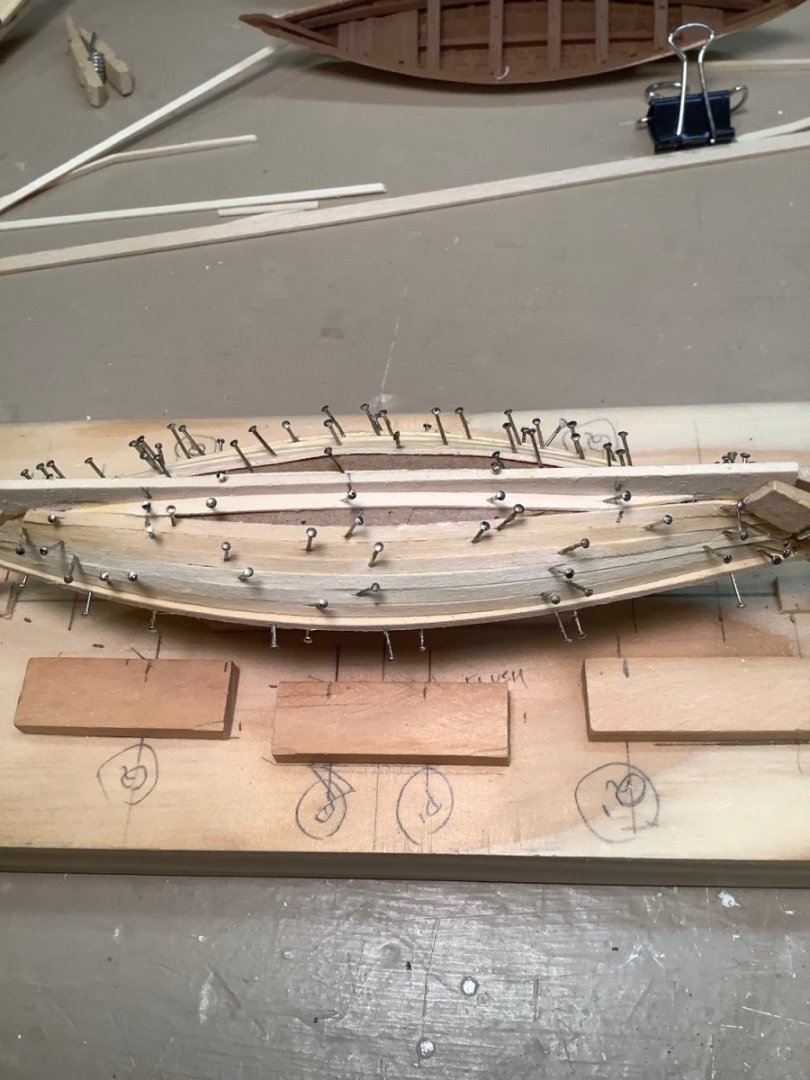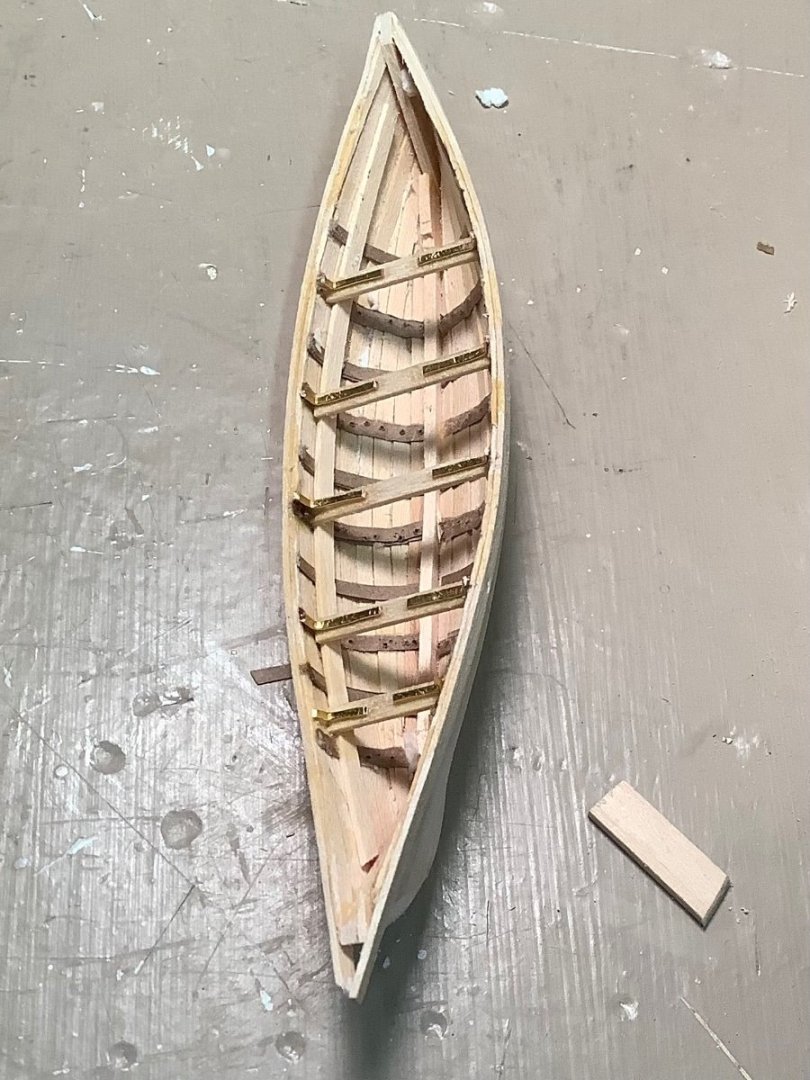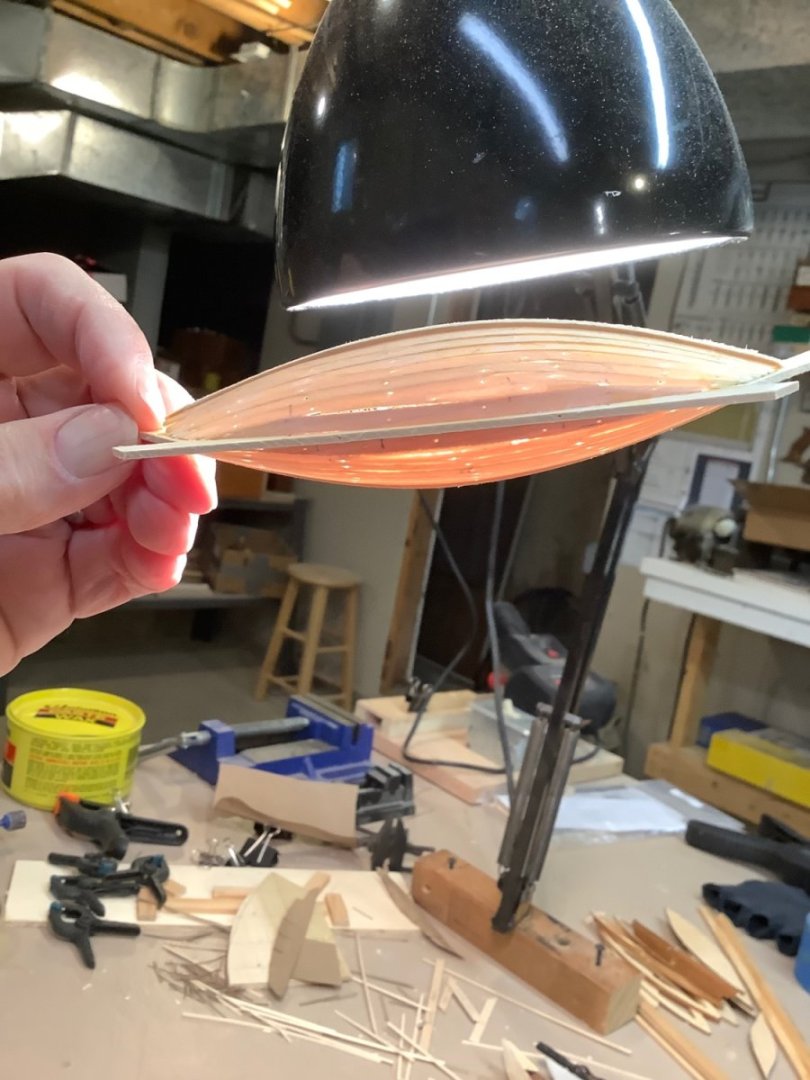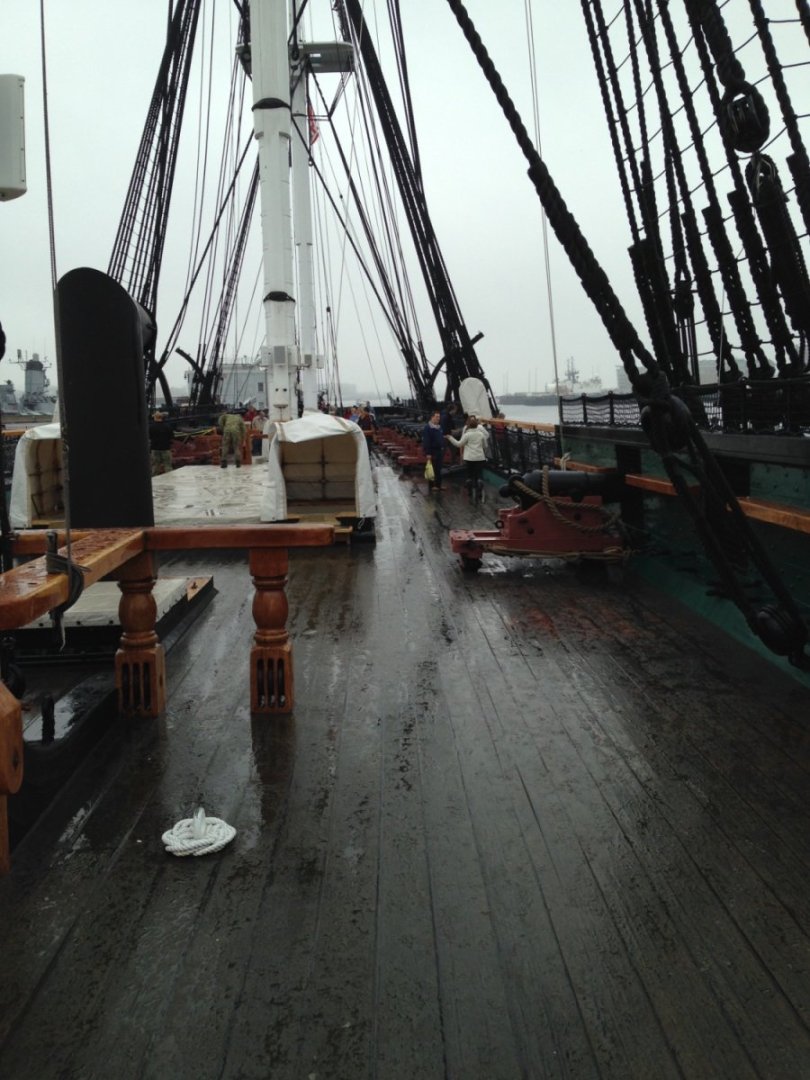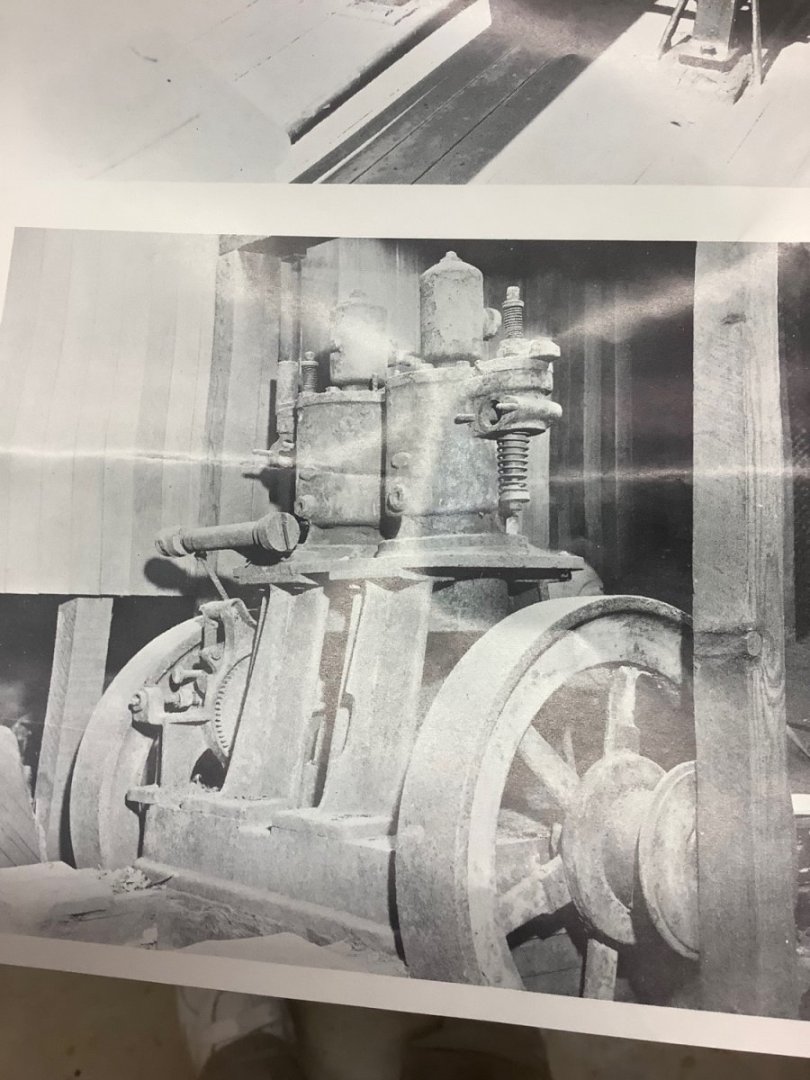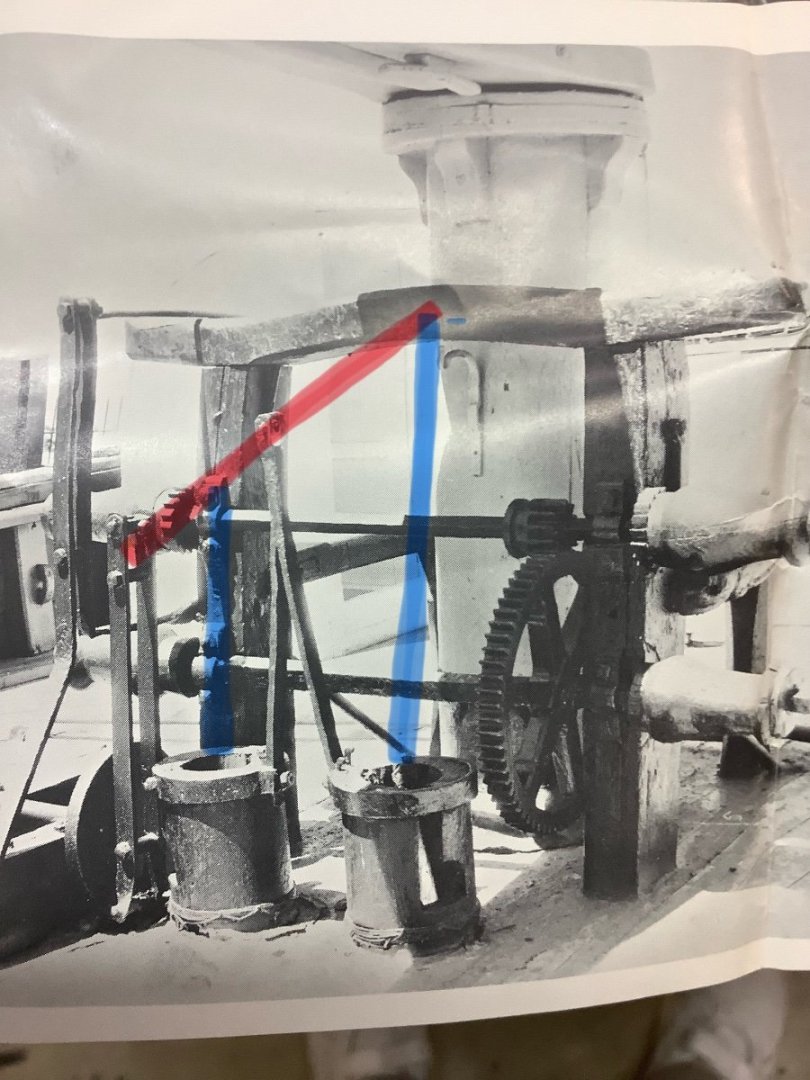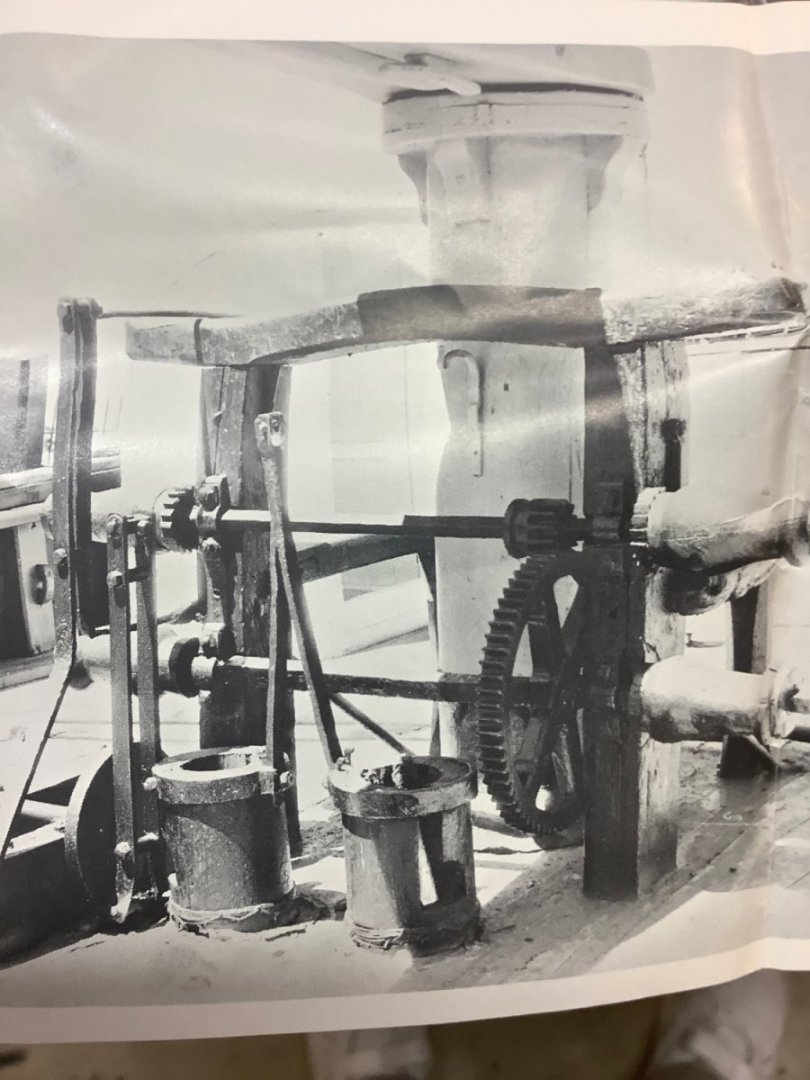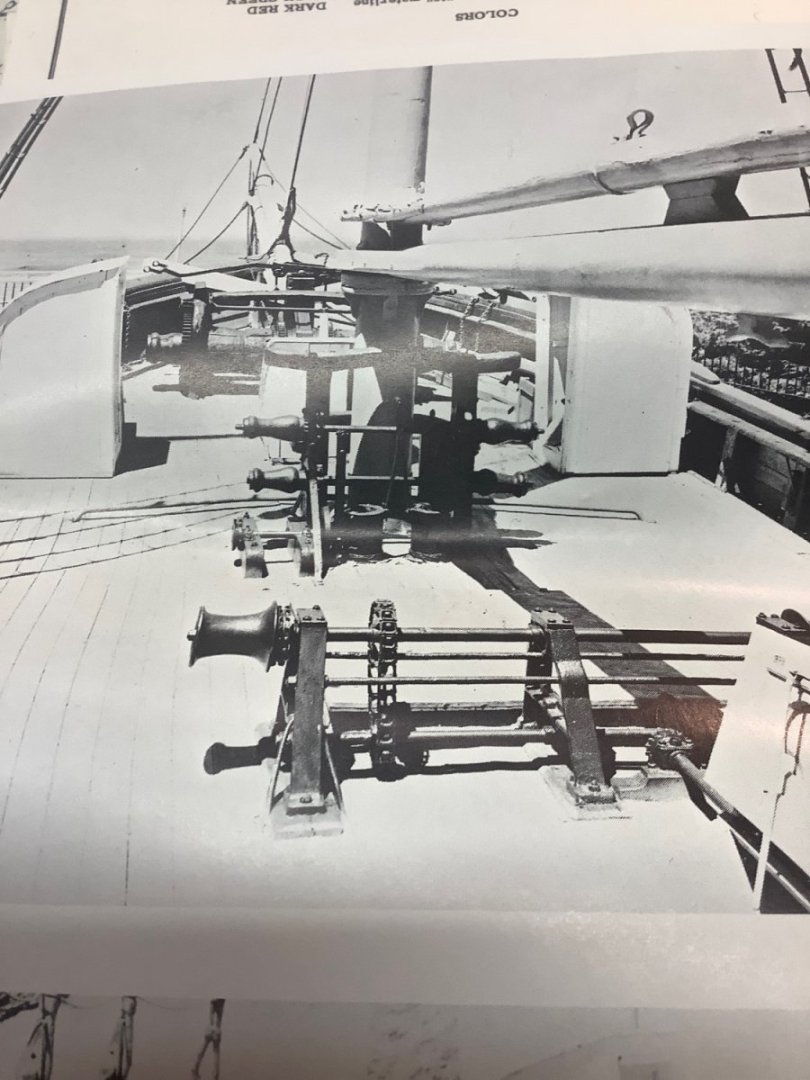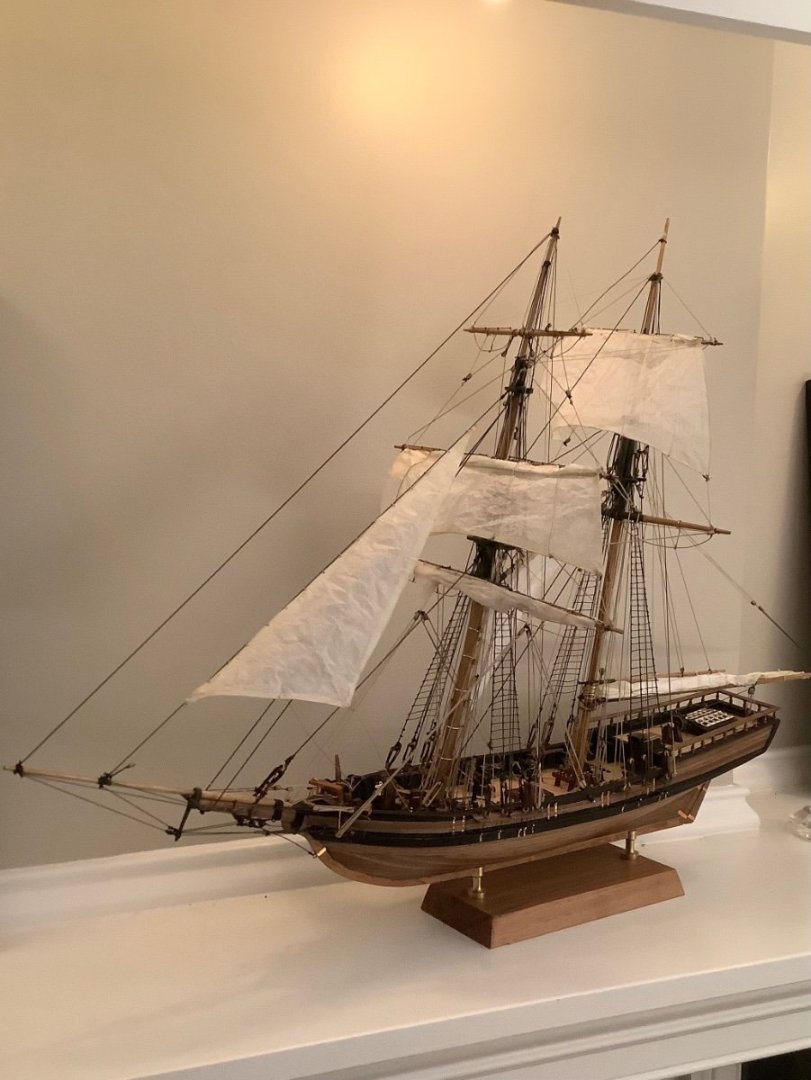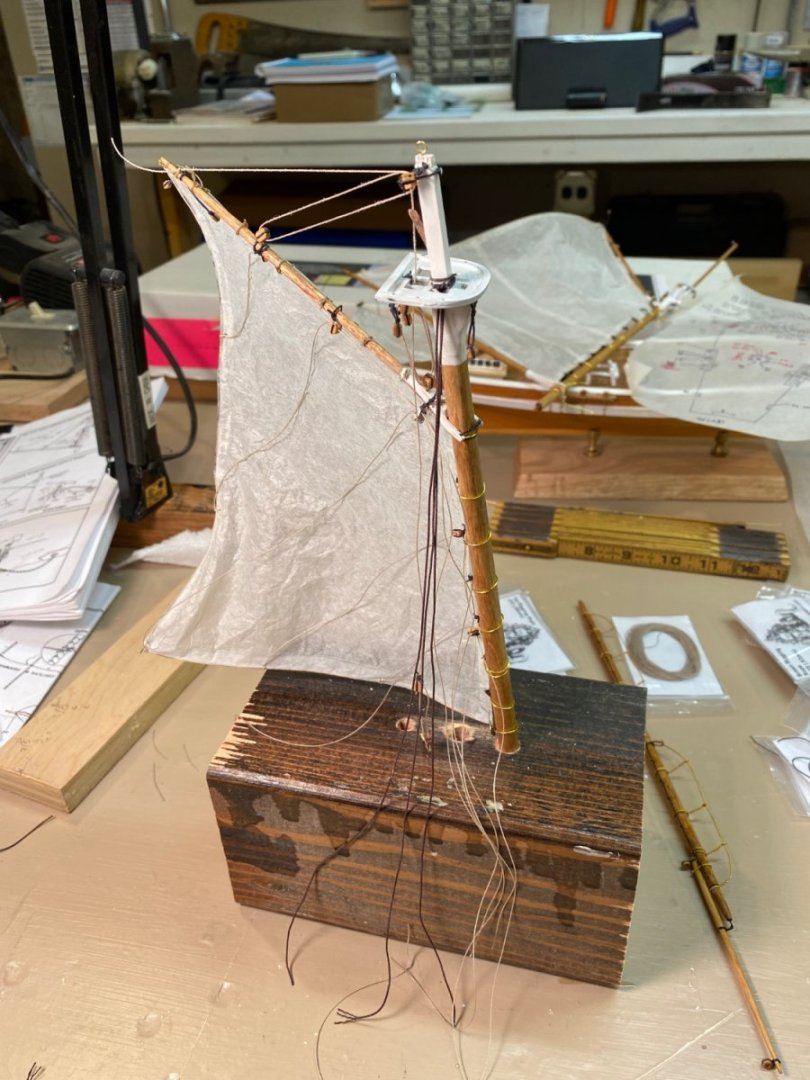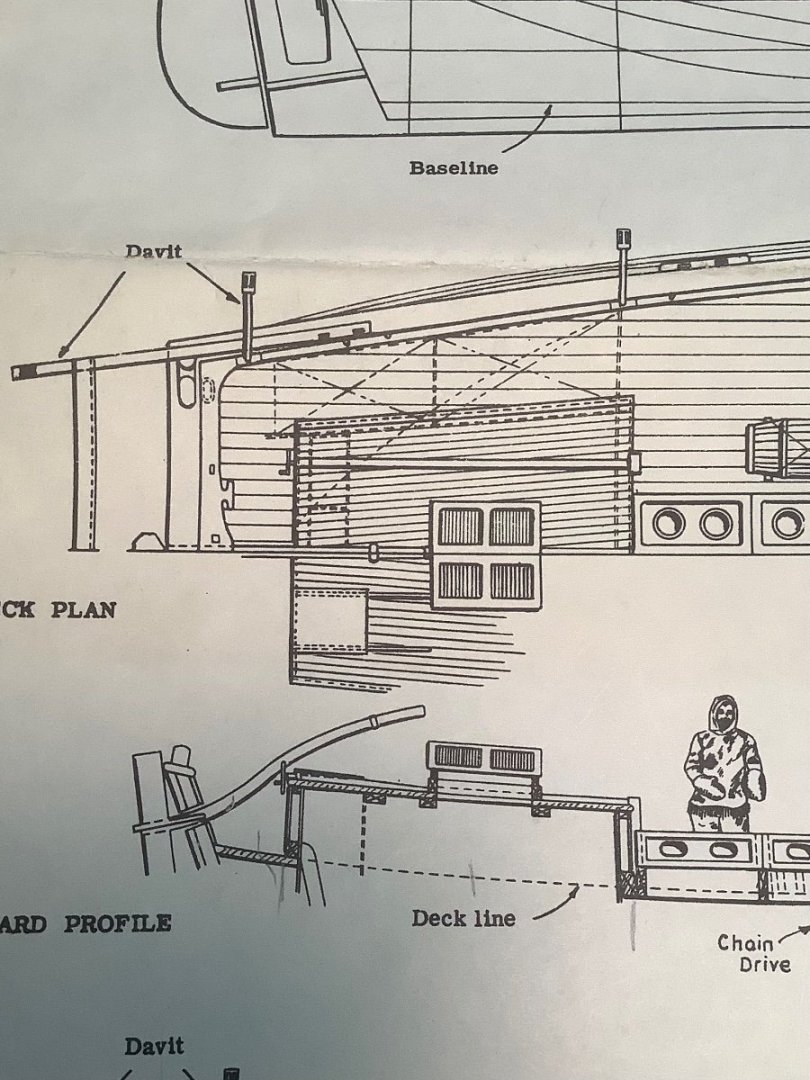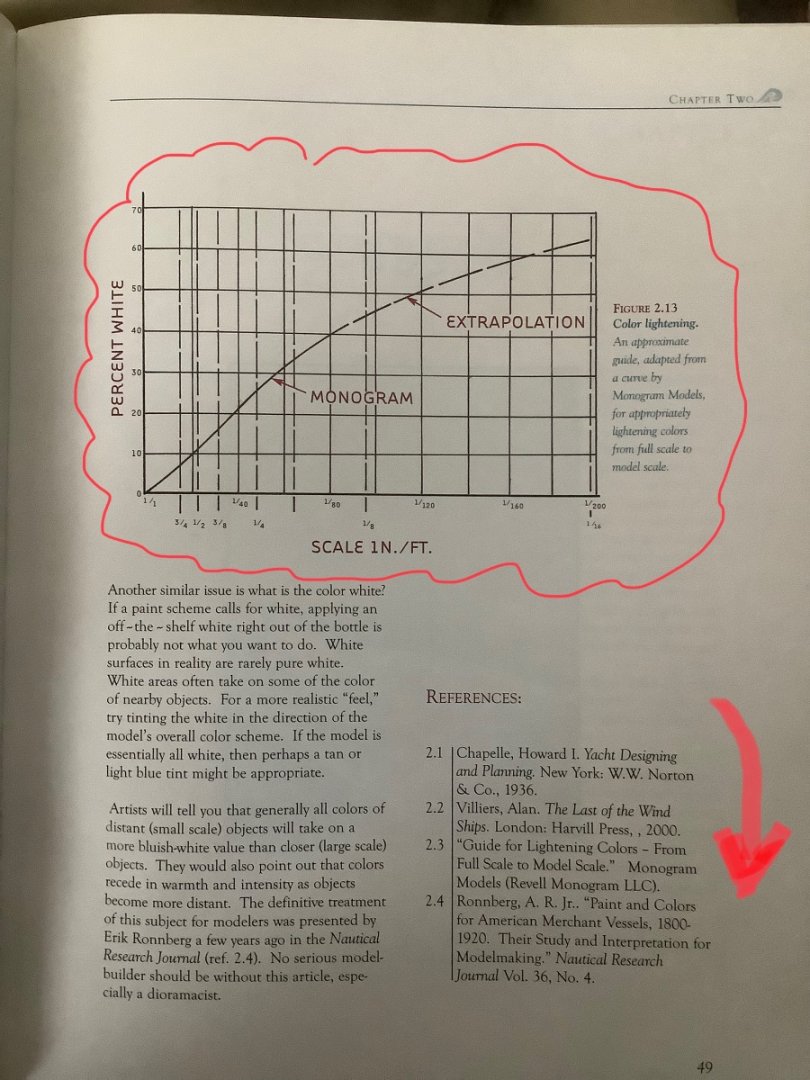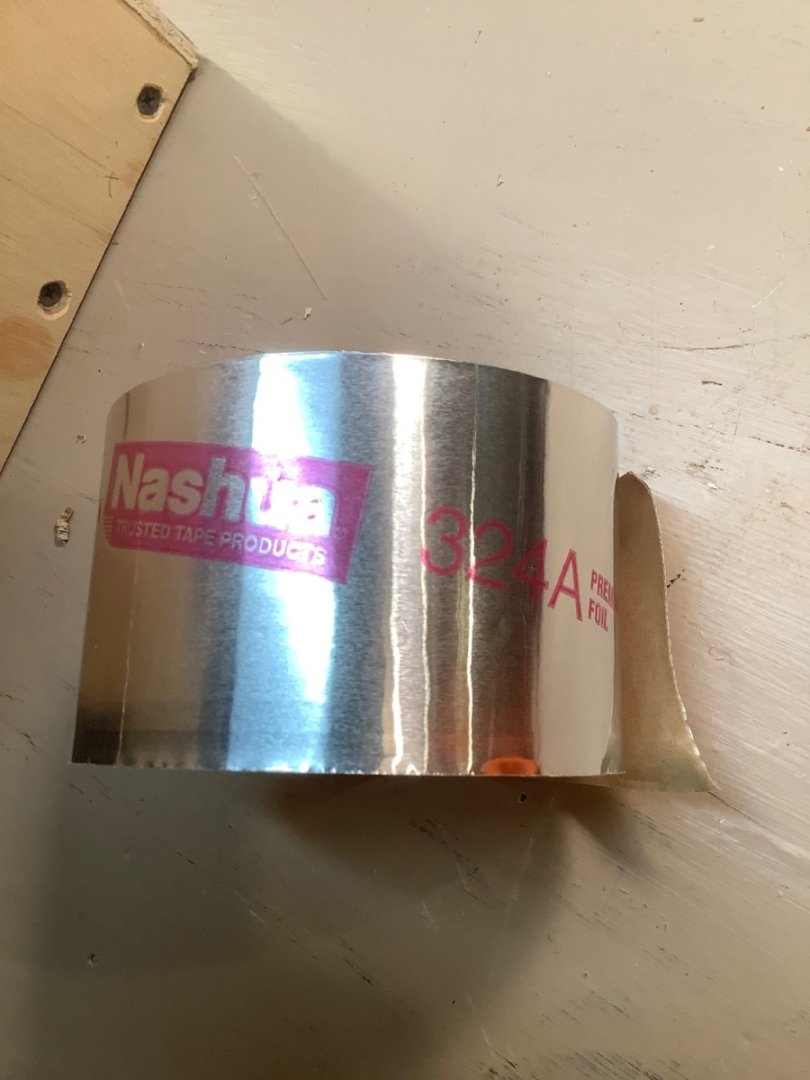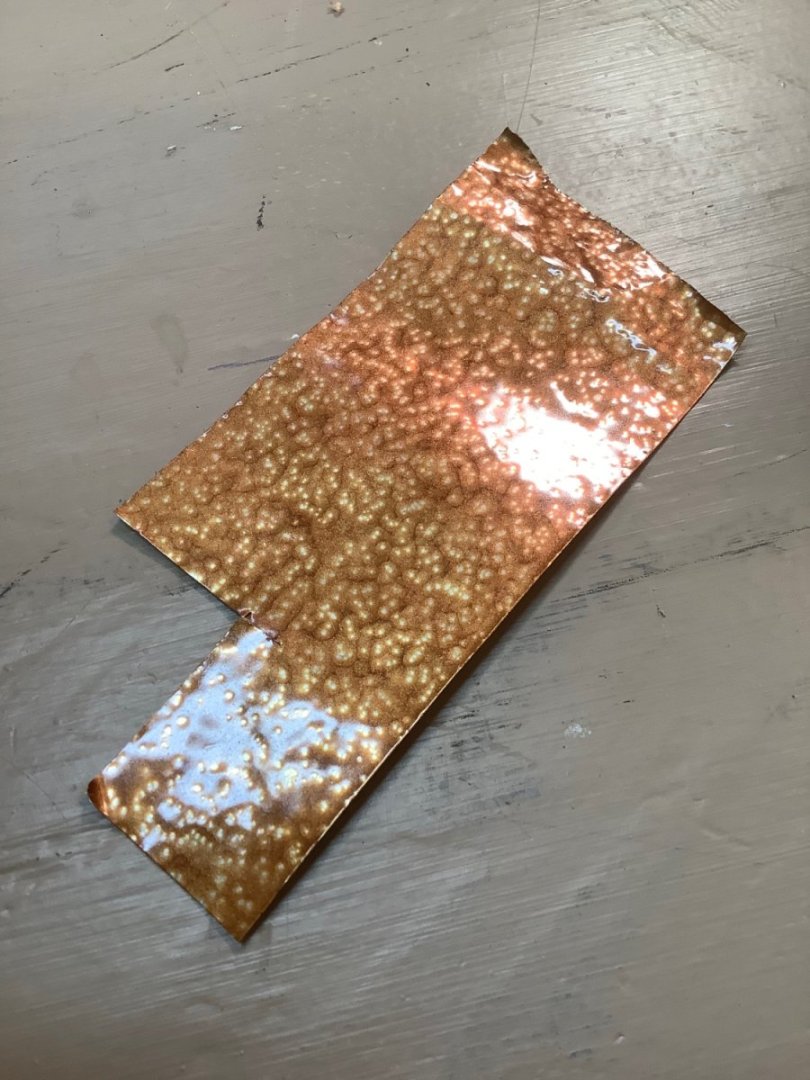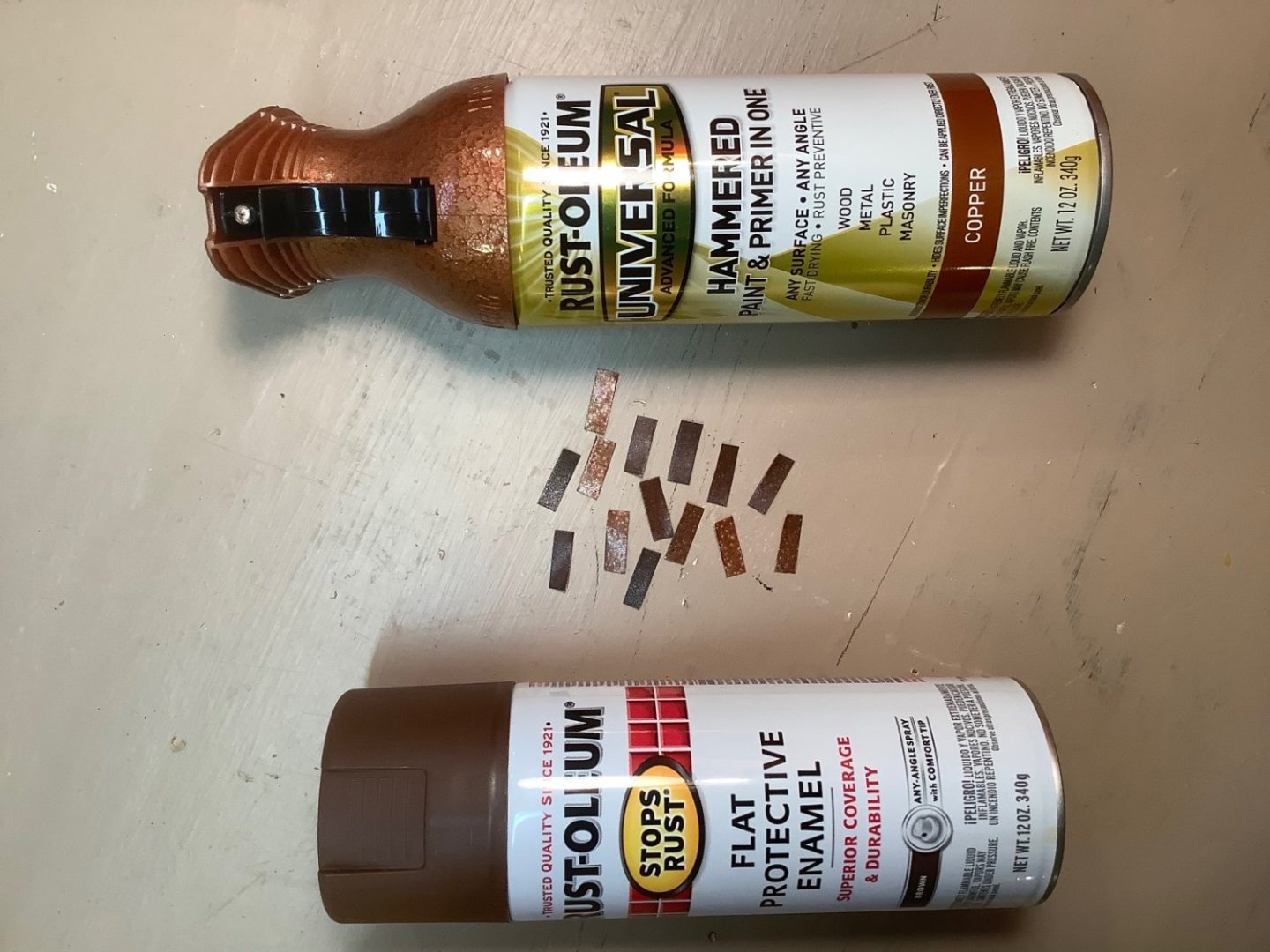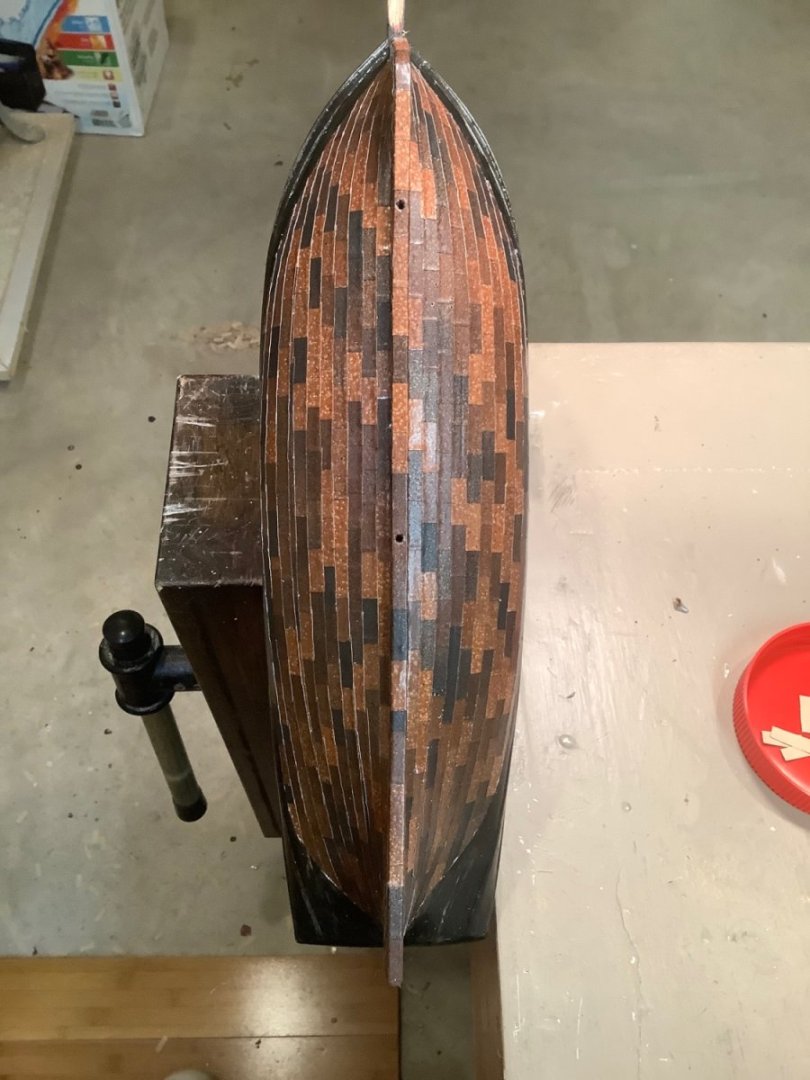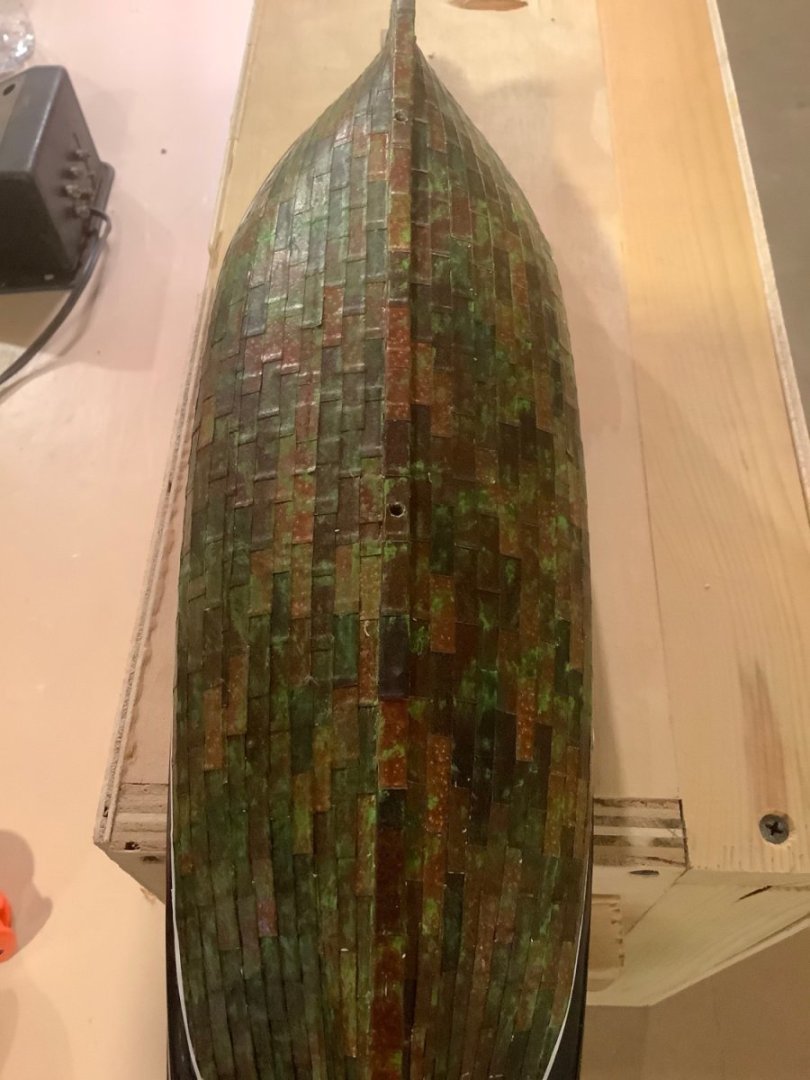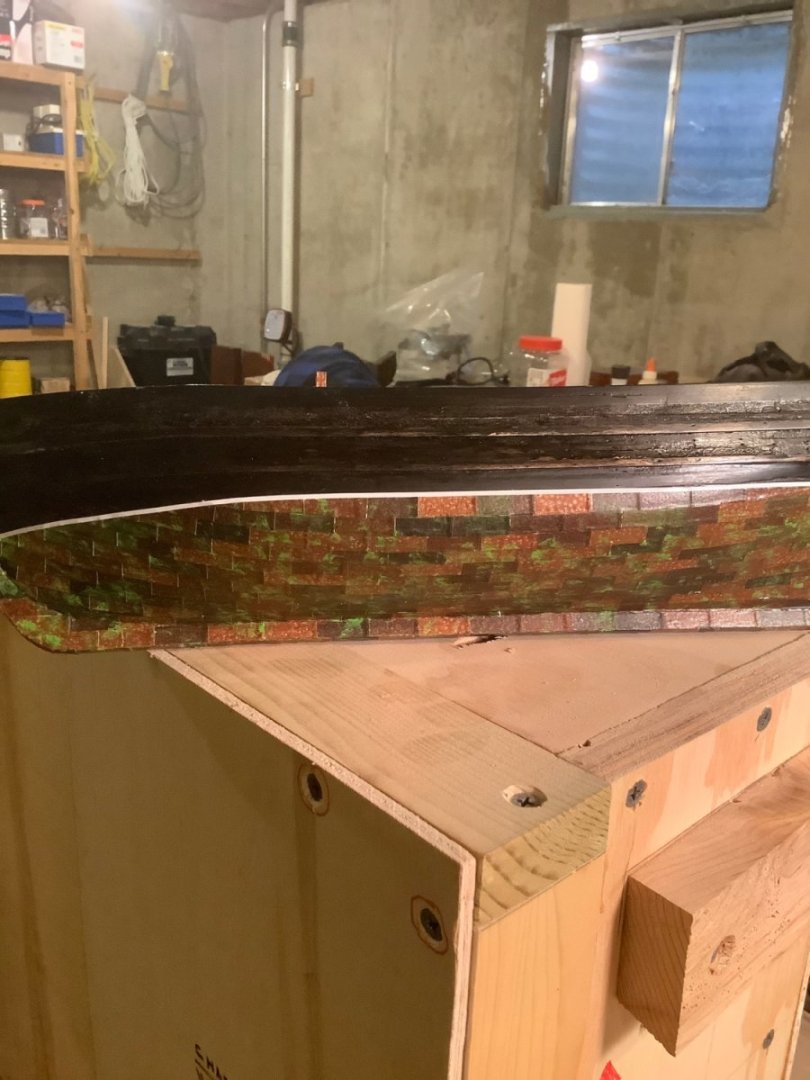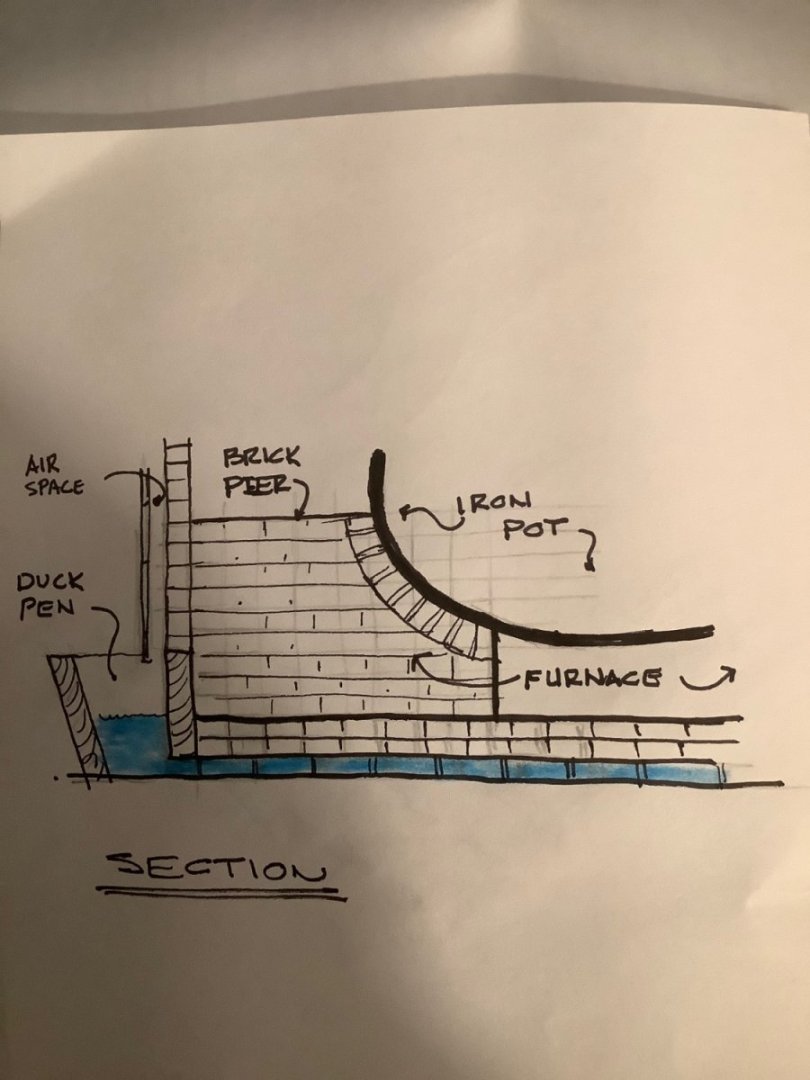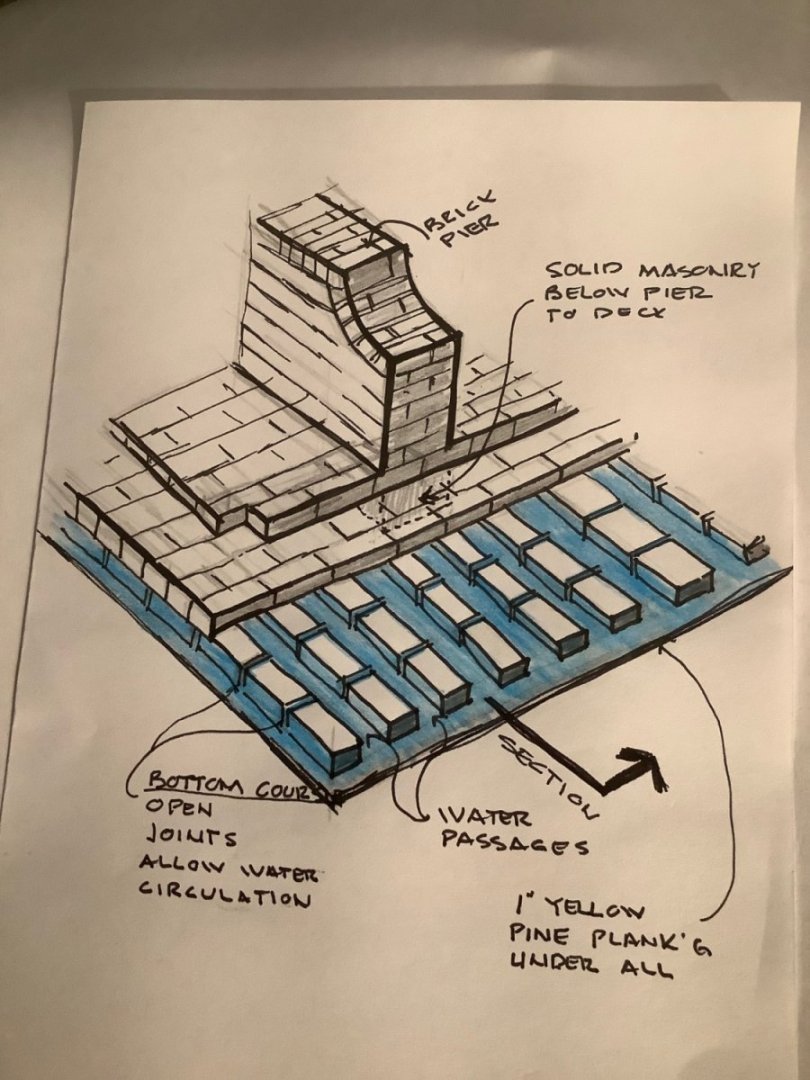
Srodbro
Members-
Posts
287 -
Joined
-
Last visited
Content Type
Profiles
Forums
Gallery
Events
Everything posted by Srodbro
-
I recently completed my version of Gjoa, which I did with sails. I had the same question about that item, and as near as I could tell it is where the sheet of the fore staysail attaches to the rail traversing the deck forward of the mast. I think the term comes from the idea that this line would “ slap” from port to starboard ( or vice-versa) while tacking. Here is a not so clear pic of my model with the subject circled in yellow. At least, that is how I interpreted it. Though, keep in mind my Norwegian is limited to “ Aquavit” and “Skol”!
-
Your boats are progressing nicely. I am concurrently building Morgan and Kate Cory whalers, and decided to first build all the boats for both (like 12 of them). There are some really good examples of whaleboats built by other modelers on these forums, and I cannot dare to compare in the finished quality. I have never had success at grinding/ sanding the interior of these small boats ( uneven, poke-thru’s). So, I used a different methodology. Using the lines provided on the kit drawings, I built a mold upon which I assembled keel and paper ribs, then planking. Filling and sanding gave me a thin hull. Now, honestly I used the center “ scrap” portions of the laser cut boat parts for my mold pattern, so dimensionally I am not super accurate. Nonetheless, I found it sufficed for my purposes. Now, my craftsmanship is far below that of others, but with a bit more patience and skill, and attention to detail ( like more attention to uniformity and number of ribs, etc,) I think this methodology used by the right hands, could be a viable building alternative. Just a suggestion. Love following your progress.
-
Missing your posts. Great work.
-
When drilling holes in, say, a farelead, ….several aligned holes in a small piece of wood, or a hole near the end of a piece subject to splitting, I’ve had luck first coating the wood with CA, letting it dry, then drilling. Drill first with your finest bit, then enlarge. Seems to form a chemical matrix on and in the wood that reinforces it. But, consider how you want to finish the piece, since stain won’t agree with the CA. Good luck.
-
Another pic from the kit is of the Dan engine. This view appears to be looking aft. At the fore end ( right of the pic) adjacent to the flywheel is a sheave that on the model drawings is identified as a chain drive … which would have a chain rising to a mate above, thence to the drive shaft that extends forward to the after most windless. Just guessing that the diameters of all the gears in the drive train to the pumps results in the pumps operating at about 60 strokes per minute ( the rate that might be reasonable for hand pumping? I can’t imagine that rig stroking at a much higher rate), then, working back to the engine and seeing not many reductions thru the various gears and chain wheels, the engine RPM must have been very low, maybe 120 RPM. I wonder if the propeller, driven from the aft end of the engine, would have turned at this low RPM as well. This sketch is what I understand Wefalck describing at the pumps.
-
Don’t know if you have these pics … they were included in my Model Shipways kit. In the upper pic, it looks to me that the upper shaft ( of all that equipment just ahead of the pumps) can be engaged-disengaged from the large gear on the lower shaft by sliding the open ended gear at the starboard end of the upper shaft. Also, it appears that the chain gear ( on the aft windless, just inboard of the portside barrel), the chain gear on portside of the assembly near the pumps, and the chain gear on the upper shaft of the forward windless, all three align. But, while I can imagine a drive chain running from the chain gear on the aft windless all the way forward to the main windless upper shaft, and a separate, shorter chain used to run from the aft windless to the portside chain gear on the shaft near the pumps; I can’t imagine how any power is transferred from the shafts driven by the chain to the two shafts just forward of the pumps.
-
I like the look of silkspan sails. I fabricate them using fine brass wire for the bolt ropes, which then allows forming the sail as “ billowing” as you like. I also prefer to mount them off-model, since my ham-fisted hands have difficulty accessing the yards if on the ship. I also found that, if modeling furled sails, to use about one-third less material, as even with silkspan the furled sail seems too bulky otherwise. But, to each his own. My models are not “ museum quality”, just good enough for my shelf. Have fun.
-
Stuart: Have fun with your Niagara. To the references already mentioned, I would add A Signal Victory by David Skaggs and Gerard Altoff. I found the descriptions of obtaining materials and building the ships at such a remote frontier location to be fascinating. When I was building My version I found such animosity on line about unverifiable historical details that I decided to name my model the Lawrence to avoid contrary comments. Seems much surrounding these ships involved contrariness. Perry named his flag ship Lawrence, after his friend who died with the final words “ Don’t give up the ship”, which Perry emblazoned on a banner….and then promptly did just that, when he transferred from Lawrence to Niagara! Anyway, enjoy your project.
-
Ahhh…Excellent! Thank you for the links. The wiki.cdd.no link led to two others, which finally provided this: “From the start in 1894 until 1925, DAN exclusively built 4-stroke glow-head engines, but around 1925 the first 2-stroke engine was tested.” So, clearly, the engine is four stroke. There is clearly a wealth of info about these engines in the attachments; unfortunately, the only other Danish words my Bestafar taught me were “ aquavit” and “ skal ”. That said, my question has been answered. Thanks again.
-
During the course of building a model of Ronald Amundsen’s Gjoa, I have become curious about the vessel’s engine. In his book on the Northwest Passage voyage, Amundsen says: ”Our little motor — a 13 H.P. of the “Dan” type — which was connected to everything that could possibly be driven with its aid, was easy to work and practical in every part. The motor was the pet of every one on board. When it was not working we seemed to miss a good comrade. I may say that our successful negotiation of the North West Passage was very largely due to our excellent little engine.” I have search for info on this “Dan” type engine, and come up empty handed. I am wondering if there has been a mis-translation or typo, and if this should have read “Day” type engine, meaning an early two-stroke gasoline engine. Anyone have any insight on this? Thanks.
-
Just my 2cents worth, and for another angle on old wood: Several years ago I got a MS Dapper Tom, solid hull kit on eBay that was old, as near as I can tell from late ‘60s, maybe earlier ( the instructions were on one 8 1/2x11 sheet). I believe the hull blank was southern yellow pine; the color and grain was much different than more recent versions of this kit from MS, and working with it was a dream. (The cast metal fittings were another story: flaky white and crumbly). I’ve made other old “ yellow box” MS kits, and agree the wood planks and sheet can be tricky to work, but, I really liked that old solid hull wood.
-
I have only just discovered you build log, but will follow closely as I am building the Model Shipways kit version of Gjoa. If I may ask: Have you any opinion on where one would stand to steer this vessel? Below is a pic of the kit instructions showing the tiller, and a scaled crew. I don’t imagine one would climb atop the cabin. The plan you show in your log seems to indicate lines from the tiller end to the corners of the cabin. Even using those lines, it seems to me there isn’t a good place to stand to efficiently reach them.
-
Makes you wonder at how six guys could jump on top of all that stuff in a pitching sea and get sorted and shoved off from the ship, and still be able to successfully chase a whale.
- 197 replies
-
- Whaling Bark
- Charles W Morgan
-
(and 1 more)
Tagged with:
-
Nearly all my models have been solid hull. I don’t have anything against POB, I just never got the hang of doing a good job with plank on bulkhead. I don’t think you sacrifice accuracy either way. Several of my models (Niagara, Chas Morgan) started from kits that I used the drawings to create patterns for bread and butter hulls, which I then planked. Others ( Kate Cory, three versions of Dapper Tom, and Gjoa) I used the solid hull from the kit as a base to apply planking to. Unlike plank on bulkhead, I have an infinite number of locations to attach a plank. Also, I have better luck getting planks to conform to odd curves. Also, glitches in shaping a hull can to me be easily corrected by cutting out and inserting a new hunk of wood and reshaping ( and filling, and sanding, maybe ad nasium). Attachment points for cleats, eyebolts, channels and even mast holes seem to me much more secure, as well. I will admit the method presents a bunch of its own challenges. The half hull I did on Wyoming at 1/8”/ft was a pretty heavy log that required a custom mount to the workbench to facilitate using planes and rasps during shaping. And, repeatedly adding station lines and waterlines while shaping can become tedious after awhile. I really love those old yellow-box solid hull kits. I’ll miss ‘em.
-
If it looks right to you, then it’s right. One could easily argue ( if needed) that your choice actually is the scaled color, that the “ real” color is much darker than your choice, since lighter-darker are relative terms, and there is probably no baseline to measure against. Not sure how anyone could be definitive with a ship of fiction. Looks great to me.
- 269 replies
-
- Sophie
- Vanguard Models
-
(and 1 more)
Tagged with:
-
Further to Flyer’s comment on color scale: Justin Camarata addresses this in his book, Waterline Dioramas. He references a chart created by Monogram Models that indicates the % white to be added to any color, including black, to get “ scaled color”. He also references an article by Eric Ronnberg in a past NRG Journal that addresses this (perhaps another NRG member can comment on that article … I’ve not seen it). Here’s a pic of the page from Camarata’s book:
- 269 replies
-
- Sophie
- Vanguard Models
-
(and 1 more)
Tagged with:
-
Dave: All the advice given by those experienced expert modelers above is really good stuff. At the risk of ruffling modeling sensitivities, I offer an alternative that is satisfactory to me, while admitting that I readily trespass on scaling and coloring guidelines, to get the effect I like. Perhaps only the product information might be useful. I used a foil tape product generally used for sealing the seams of foil-backed insulation ( clearly much thicker than scale). I painted several strips of this stuff with a “ hammered copper” spray paint, then gave a dust coating of flat brown, of varying density. I cut the tape to the copper cladding sheet size I wanted ( probably larger than scale) then selected individual tiles at random and applied to the hull. Finally, I dappled on with a nearly dry brush some green patina, Testors “ sublime green”. Here are the products used: Bottom pic is of the painted tape, without the flat brown dusting. Top pic includes several of the cut cladding tiles. Here is the clad hull, prior to green weathering. Here it is with green added. Of course, nobody will ever see the hull from this angle, so here’s an idea of how it looks from the side. I try to represent my models as working ships, weathered, abused and beaten, especially if it is a whaler ( as this one is), rather than pristine, perfect museum exhibits. I have been at working waterfronts, and at ports where recreations and replicas are displayed, and there is clearly a difference in the respective appearances. You have to model what you like ( unless you are getting paid for it) Like I said, just another alternative.
-
Mystery Solved ! I obtained from Mystic Seaport Museum a drawing of the try works construction details. Here are a couple ( very rough) sketches that describe the construction shown on the drawings. The bottom course of brick rests on a layer of yellow pine sheathing over the deck. This course has open joints with no mortar between. Several courses with mortar joints lay on top of the base course, and form the floor of the furnace. In several locations, brick piers are built up to where the iron pots can rest on them. I suspect ( but this isn’t clear from the construction drawings) that these piers extend all the way down to the sheathing, penetrating the water course. In the sketch the blue represents the water “ coolant “ that provides additional protection to the deck. Filled at the “duck pen” the water level could be kept high enough there to assure flow thru the bottom course interstices. The next sketch shows additional detail The bricks of the bottom water course are widely spaced athwart ships to provide even more water protection. This whole try works structure would have been enormously heavy. There is a wooden plank structure with massive iron brackets fastened to the deck on the starboard and port sides of the structure to hold it in place, but it doesn’t seem there is much to keep it from sliding fore-aft … but apparently the weight was enough. Nonetheless, the working of the ship must have played havoc with the integrity of the joints. Seeing this construction, I wonder whether the water course was less intended to protect the deck from heat than from fat/grease leaking thru the layers of brick ( due to cracks in the masonry and joints ) from the burning of blubber scraps as fuel and spreading fire to the deck below. At any rate, the arrangement of this water course and the structure supporting the pots is more clear.
About us
Modelshipworld - Advancing Ship Modeling through Research
SSL Secured
Your security is important for us so this Website is SSL-Secured
NRG Mailing Address
Nautical Research Guild
237 South Lincoln Street
Westmont IL, 60559-1917
Model Ship World ® and the MSW logo are Registered Trademarks, and belong to the Nautical Research Guild (United States Patent and Trademark Office: No. 6,929,264 & No. 6,929,274, registered Dec. 20, 2022)
Helpful Links
About the NRG
If you enjoy building ship models that are historically accurate as well as beautiful, then The Nautical Research Guild (NRG) is just right for you.
The Guild is a non-profit educational organization whose mission is to “Advance Ship Modeling Through Research”. We provide support to our members in their efforts to raise the quality of their model ships.
The Nautical Research Guild has published our world-renowned quarterly magazine, The Nautical Research Journal, since 1955. The pages of the Journal are full of articles by accomplished ship modelers who show you how they create those exquisite details on their models, and by maritime historians who show you the correct details to build. The Journal is available in both print and digital editions. Go to the NRG web site (www.thenrg.org) to download a complimentary digital copy of the Journal. The NRG also publishes plan sets, books and compilations of back issues of the Journal and the former Ships in Scale and Model Ship Builder magazines.


